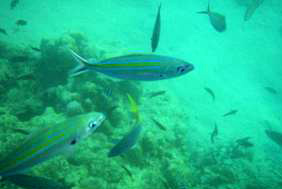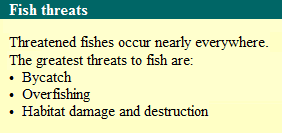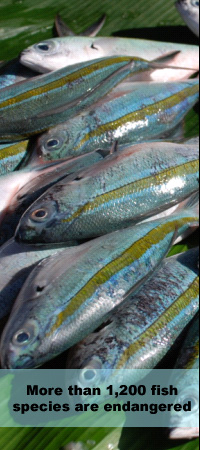|
Lobe-finned fishes (Class Sarcopterygii)
Lobe-fins are currently represented only by two coelacanths, Latimeria chalumnae and Latimeria menadoensis, and six species of lungfishes: Lepidosiren paradoxa, Neoceratodus forsteri, and four species of Protopterus. This group shares a common ancestor with the tetrapods.
External identification characters are:
Paired fins that form lobes or filaments
Tail is heterocercal and there is a double dorsal fin
Scales are cosmoid and of moderate to large
Subclass Crossopterygii (Coelacanth)
Coelacanths have remained virtually remained unchanged morphologically for millions of years making them "living fossils". The coelacanth lineage is believed to be close to the origin of the evolution of tetrapods. The presence of seven lobed fins, unique among the living fishes is the most remarkable features of the coelacanths.
Fish Decline
Around the world, fish populations are decreasing as demand for fish is increasing. Within the first 15 years of industrialized fishery operation, fish populations have been decreased by 80 percent on average. For example, in the Gulf of Thailand, 60 percent of large finfish, sharks and skate were lost within the first five years of commercial trawl fishing.
The decline of large mature fish has led to an increase in the intensity of fishing and to an increase in the number of juveniles and non food fish caught (e.g., bycatch). Water pollution is also threatening spawning grounds and inshore of many fish species.
The use of some fishing techniques such as heavy trawls destroys the ocean floor ecosystem on which the fish depend. Studies in Australia indicated that even 15 years after closing an area to all fishing, the sea floor habitat had not recovered from the effects of trawling. Dynamiting coral reefs and using poisons for fishing has devastative impacts on marine ecosystems for decades or longer.
Links
Continue on page 6
|
|


In the Philippines, more than 80 percent of the coral reefs have disappeared © 2007 Pierre Fidenci


Restoring mangroves is a crucial part of fish protection
© 2007 Pierre Fidenci
|









